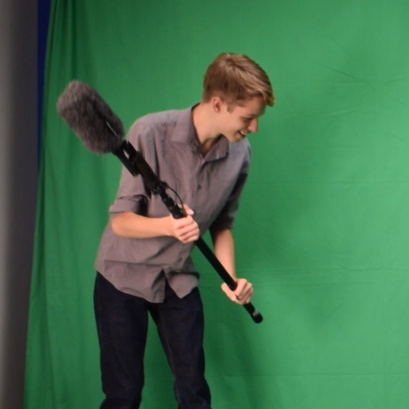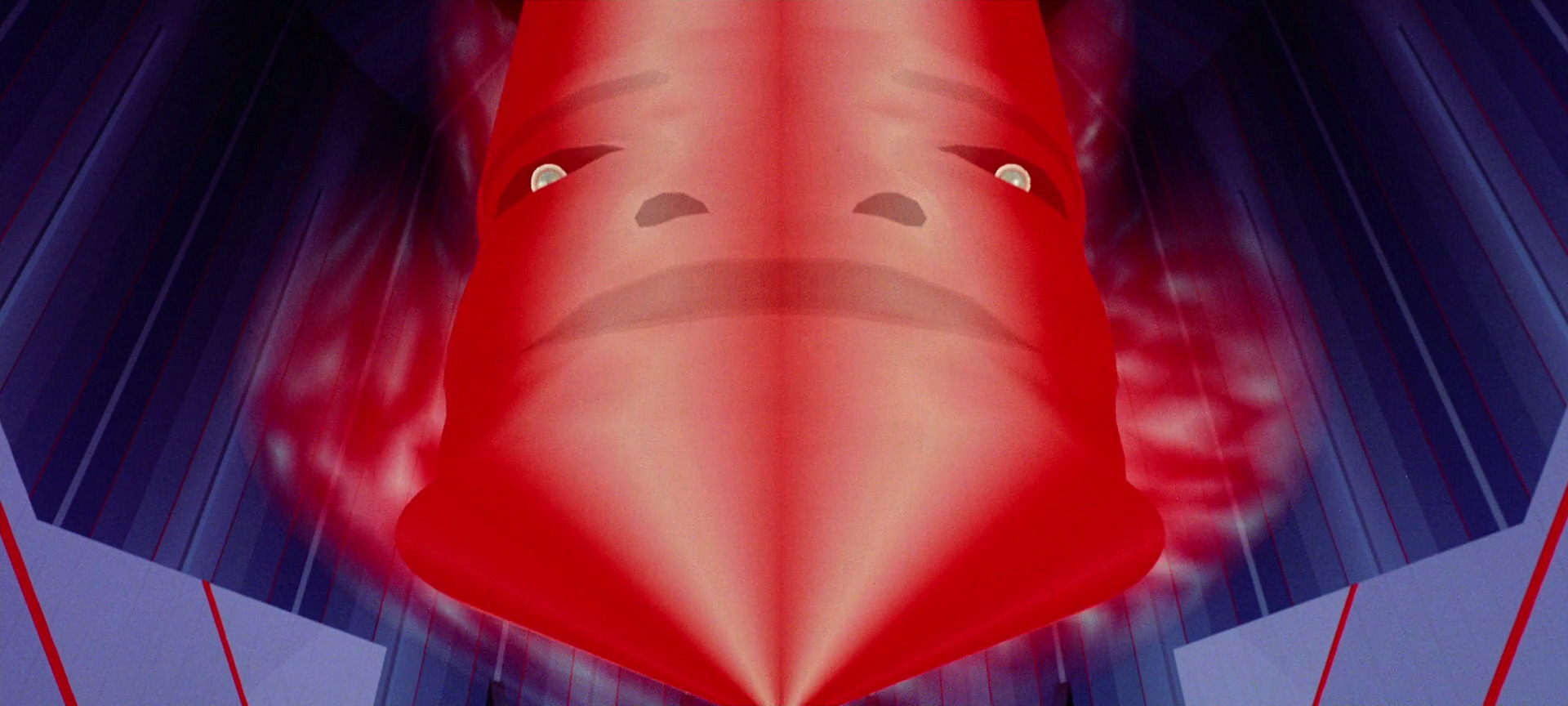New Footage Shows Tesla On Autopilot Crashing Into Police Car After Alerting Driver 150 Times::Six officers who were injured in the crash are suing Tesla despite the fact that the driver was allegedly impaired
In fact, by the time the crash happens, it’s alerted the driver to pay more attention no less than 150 times over the course of about 45 minutes. Nevertheless, the system didn’t recognize a lack of engagement to the point that it shut down Autopilot
I blame the driver, but if the above is true there was a problem with the Tesla as well. The Tesla is intended to disengage and disable autopilot for the remainder of the drive after a small number of ignored alerts. If the car didn’t do that, there’s a bug in the Tesla software.
I think it’s more likely the driver used a trick to make the car think he was engaged when he was not. You can do things like put a water bottle wedged in the steering wheel to make the car think you have tugged on the steering wheel to prove you are engaged. (Don’t ask me how I know)
The Tesla is intended to disengage and disable autopilot
What about: slow down, pull up to the right, stop the car, THEN disengage?
This is what it does already: https://youtu.be/oBIKikBmdN8
That wasn’t what it did here.
Like all the poor delusional fanbois here, you are going on the wrong assumption that some warning has been ignored. Just watch the initial video again and listen better this time.
I’m not even replying to the article or the original commenter. I’m replying to the person that said “why doesn’t the car slow down and stop when the warnings are ignored?” which is precisely what it does.
I’m far from a Tesla fanboy, and there is no shortage of valid criticisms against Tesla. However, misrepresenting what autopilot does in the event of a forced disengagement isn’t right either.
After 3 alerts, it’s off until you park. There are visual cues that precede the alert though and these do not count. I don’t recall how many there are and for how long, but you start by seeing a message asking to have your hands on the wheel, then a blue line at the top, them the line starts pulsing ,then you’ve got an audio alert that is the first strike. Three strikes during the same drive and you need to park before using autopilot again.
I have a lot of trouble understanding how the NTSB (or whoever’s ostensibly in charge of vetting tech like this) is allowing these not-quite self driving cars on the road. The technology doesn’t seem mature enough to be safe yet, and as far as I can tell, nobody seems to have the authority or be willing to use that authority to make manufacturers step back until they can prove their systems can be integrated safely into traffic.
It’s just ADAS - essentially fancy cruise control. There are a number of autonomous vehicle companies who are carefully and successfully developing real self-driving technology, and Tesla should be censured and forbidden for labeling their assistance software as “full self-driving.” It’s damaging the real industry.
That’s similar to cruise control. Cruise control can be dangerous because someone could fall asleep (not having to manage your speed can afford up sleepiness) and the car wouldn’t slow down.
In my opinion, those options are all the driver’s responsibility to know their own limit and understand that the tool is just a tool and you are responsible to making sure your driving is safe for others. Tesla autopilot adds a ton of safety features that avoid a lot of collisions based on lacking attention, sleepiness, and actively avoiding other drivers faults. But it’s still just a tool and the driver is responsible of their own car and driving.
The difference is that cruise control will maintain your speed, but ‘autopilot’ may avoid or slow down for obstacles. Maybe it avoids obstacles 90% of the time or 99% of the time. It apparently avoids obstacles enough that people can get lulled into a false sense of security, but once in a while it slams into the back of a stationary vehicle at highway speed.
It’s easy to say it’s the driver’s responsibility, and ultimately it is, of course, but in practice, a system that works almost all of the time but occasionally causally kills somebody is very dangerous indeed, and saying it’s all the driver’s fault isn’t really realistic or fair.
A lot of modern cruise control systems will match the speed of the car in front of you and stop if they stop. They’ll also keep the car in the current lane.
It’s frustrating that Tesla’s system can’t detect a stationary police car in the middle of the road… but at the same time apparently that’s quite a difficult thing to do (without false positives, where the car would suddenly slam on the brakes and stop for no reason).
It’s actually not that hard to do, but Tesla is not willing to spend the necessary time and resources to solve the hard problems.
Maybe it avoids obstacles 90% of the time or 99% of the time.
99 is not enough!
99 means many many more dead people.
You need to go for 99.99%
Actually it’s absolutely realistic and fair. I don’t like Musk, or Tesla for that matter. But they make it pretty damn clear that you’re 100% responsible for the vehicle when using that feature. Anyone who assumes they don’t need to pay attention is a moron and should be held responsible. If a 747 autopilot system started telling the pilot to take control and they didn’t we wouldn’t blame the manufacturer, we’d blame the shitty pilot that didn’t do their job.
I can’t wait to get smacked by a Tesla beta tester and have everyone debate whether the car or the driver is responsible for my innards being spread across 4 lanes. Progress!
The problem with Tesla is that their entire marketing is based on “Our cars drives themselves”.
It’s not “not-quite-self-driving” though, it’s literal garbage. It’s cruise control, lane assist and brake assist. The robot vision in use is horrible.
There are Tesla engineers bad mouthing the system openly.
Musk is a scammer and they need to issue an apology for all of the claims around autopilot, probably pay a great deal of money, and then change the name and advertising around it.
Oh, and also this guy should never drive again.
$$$ that’s how.
This is stupid. Teslas can park themselves, they’re not just on rails. It should be pulling over and putting the flashers on if a driver is unresponsive.
That being said, the driver knew this behavior, acted with wanton disregard for safe driving practices, and so the incident is the driver’s fault and they should be held responsible for their actions. It’s not the courts job to legislate.
It’s actually the NTSB’s job to regulate car safety so if they don’t already have it congress needs to grant them the authority to regulate what AI behavior is acceptable/define safeguards against misbehaving AI.
There’s no way the headline is true. Zero percent. The car will literally do exactly what you stated if it goes too long without driver engagement and I’ve experienced it first hand.
Evidently, he was aware enough to respond to the alerts, per the logs (as stated in the WSJ video that’s in the article). It shows a good bit of the footage, too.
Seems like they need something better for awareness checking than just gripping the wheel and checking where your eyes are pointed. And obviously better sensors for object recognition.
deleted by creator
I turned off the “lane assist” in our Mazda because it kept steering me back toward obstacles I was trying to avoid, like cyclists, oversized loads, potholes, etc. I don’t know why anyone thought that was a good idea.
But try buying a car without those features now…sigh.
Use your turn signal to indicate your direction change and it won’t do that.
If you’re swerving to avoid a sudden obstacle you reasonably may not have the foresight or reaction to flip on a signal. The car still needs to not force you back on collision course.
Even moving over slightly in the lane to avoid a pothole triggers it; it doesn’t seem like a turn signal should be necessary in that situation. Instead the situation seems to be that I’m seeing the pothole and altering the car’s course gently to avoid it, and I get close to the line and it freaks out.
I guess if I drove right up to the obstacle then swerved, it wouldn’t do it…but I was always taught swerving was a last-resort thing, best to drive as smoothly as possible. (This was my dad’s argument, and I said, “Uh, SOMEONE taught me to not swerve unless it was necessary…” (him). He laughed.
deleted by creator
The driver is responsible for this accident, Tesla still should be liable imo for all the shady and outright misleading advertising around their so called “self driving”. Compare Tesla’s marketing to like GMs of Hyundai’s, both of which essentially have parity with Teslas system in terms of actual features, and you’ll see a big difference
It should be pulling over and putting the flashers on if a driver is unresponsive.
Yes. Actually, just stopping in the middle of the road with hazard lights would be sufficient.
You say that yet a Tesla did exactly that, which caused some tailgaters to crash into the back of it, and everyone blamed the Tesla for causing an accident.
https://theintercept.com/2023/01/10/tesla-crash-footage-autopilot/
Sounds like the injured officers are suing. It’s a civil case not criminal, so I’m not sure how much the court would actually be asked to legislate. I’d be interested to hear their arguments, though I’m sure part of their reasoning for suing Tesla over the driver is they have more money.
Driver is definitely the one ultimately at fault here, but how is it that Tesla doesn’t perform an emergency stop in this situation - but just barrels into an obstacle?
Even my relatively ‘dumb’ car with adaptive cruise control handles this type of situation better than Tesla?!
Your relatively ‘dumb’ car probably doesn’t try to gauge distance exclusively by interpreting visual data from cameras.
Wait, the Model X doesn’t have RADAR/LIDAR to supplement the cameras?
Nope. For whatever reason, Musk decided to just use cameras
“Whatever reason” is obviously just trying to cut corners and improve the bottom line with no regard for the consequences.
A few years ago, they were experimenting with LIDAR (most other car makers had it already then).
Then they abandoned it, even though everyone in the world thought that they need it so badly.
Now we see one of the results.
No, they were too expensive for Musk
I believe this is caused by the fog combined with flashing lights and upward/curved road. The Tesla autopilot system is super impressive in almost all situations but you can clearly see the limits in extreme situations. Here, the drunk driver is definitely at fault, I don’t understand why they’d sue Tesla.
I don’t understand why they’d sue Tesla.
Money. Tesla has much more money than the drunk.
Because of Tesla’s exaggerated advertising.
Even my relatively ‘dumb’ car […] handles […] better than Tesla?!
Not going to be the last time when you experience that :-)
150 more warnings than a regular car would give, ultimately it’s the driver’s fault.
Tesla actively markets their cars as ‘‘the car drives itself’’.
Do we have any evidence from the driver stating that he didn’t realize he was using a glorified cruise control similar to autopilot on an airplane?
Source or stfu
Here is a video from 2016 where Tesla claims that “the car drives itself”.
Sadly, Tesla has no such technology.
There’s this sweet new website called Google. Try using that before you throat Musk.
Oh I tried, since I am so bad at googling please provide the source
It’s literally called autopilot
Yes, even in self driving cars the driving is expected to pay attention in case they need to take control in unexpected events
So if the guy behind the wheel died and couldn’t react to the alerts then the car can’t do a decision to just stop instead of crashing into a police car?
He was reacting to alerts, complying to them by simply touching the steering wheel. He did that 150 times during that 45 minute trip ( not all the trip was on auto pilot).
So if the guy died the car would of disengaged auto pilot (I’m not sure how this works).
You can check the video in the article. It’s quite informative .
Edit
I saw another video and it takes ~60 seconds after taking off your hand from the steering wheel for the car to safely come to a full stop.
So the headline should be “drunk driver hits police car.”
TBH if you’re not used to it the steering wheel check can warn frequently. It’s checking for a small amount of torque on the wheel rather than actually holding it (as there are no pressure sensors) and that catches people out but the prompt says to put your hands on the wheel… I could believe 150 times on a long journey.
Setting aside the driver issue, isn’t this another case that could’ve been prevented with LIDAR?
Don’t see how that’s a Tesla problem… Drunk/high driver operating their car incorrectly.
By driving it
Tesla wasn’t driving it, the drunk/high owner was.
It was on autopilot, so technically the drunk wasn’t driving it. But he is the one responsible.
Autopilot doesn’t work that way, the drunk should have known that when he wasn’t drunk and not tried to use it that way.
It’s like the old shaggy dog story about the guy driving a camper, setting the cruise control, then going into the back to make lunch.
That’s not the fault of the cruise control.
Right
Officers injured at the scene are blaming and suing Tesla over the incident.
…
And the reality is that any vehicle on cruise control with an impaired driver behind the wheel would’ve likely hit the police car at a higher speed. Autopilot might be maligned for its name but drivers are ultimately responsible for the way they choose to pilot any car, including a Tesla.
I hope those officers got one of those “you don’t pay if we don’t win” lawyers. The responsibility ultimately resides with the driver and I’m not seeing them getting any money from Tesla.
Well, in the end it’s up to whether Tesla’s ADAS is compliant with laws and regulations. If there really were 150 warnings by the ADAS without it disengaging, this might be an indicator of faulty software and therefore Tesla being at least partially at fault. It goes without saying that the driver is mostly to blame but an ADAS shouldn’t just keep on driving when it senses that the driver is incapacitated.
Poor
drunkimpaired driver falling victim to autonomous driving… Hopefully that driver lost their license.You know what might work, program the car so that after the second unanswered “alert” the autopilot pulls the car over, or reduces speed and turns on the hazards. The third violation of this auto pilot is disabled for that car for a period of time.
I drive a Ford Maverick that is equipped with adaptive cruise control, and if I were to get 3 “keep your hands on the wheel” notifications, it deactivates adaptive cruise until the vehicle is completely turned off and on again. It blew my mind to learn that Tesla doesn’t do something similar.
It does and did… He kept driving anyway. Drink drivers FTW.
I presume AEB kicked in but all that can do is reduce the speed of inpact… if you’re determined to kill yourself there’s not much the car can do.
This is literally exactly how it works already. The driver must have been pulling on the steering wheel right before it gave him a strike. The system will warn you to pay attention for a few seconds before shutting down. Here’s a video: https://youtu.be/oBIKikBmdN8
Ah, so its just people defeating the system
The system will warn you to pay attention
… and if we have learned anything from that incident, it is that the warnings have been worthless.
The system can be tricked even by the worst drunkards!
for a few seconds before shutting down.
Few seconds are not enough. The crash was already unavoidable.
You’re misinterpreting what I said and conflating two separate scenarios in your 2nd statement. I didn’t say anything about the system warning “for a few seconds before shutting down” in the event of an eminent collision. It warns the driver before shutting down if the driver fails to hold the steering wheel during normal driving conditions.
The warnings were worthless because the driver kept responding to them just before they timed out and shut autopilot down. It would be even worse if the car immediately pulled off the road and stopped in traffic without warning the driver first.
They aren’t subtle either, after failing to touch the wheel for about 5-10 seconds it starts beeping loudly and flashing an icon on the screen.
This is not a case of autopilot causing an accident, this is a case of an impaired driver operating a vehicle when they should not have been. If the driver was using standard cruise control, would we be blaming the vehicle because their foot wasn’t touching the accelerator when the accident happened? No, we wouldn’t.
Here is an alternative Piped link(s): https://piped.video/oBIKikBmdN8
Piped is a privacy-respecting open-source alternative frontend to YouTube.
I’m open-source, check me out at GitHub.
This source keeps pushing tesla propaganda. There’s always an angle trying to sell that it wasn’t the tesla’s fault
Data from the Autopilot system shows that it recognized the stopped car 37 yards or 2.5 seconds before the crash.
Is the video slowed down? In the video, if you pause 2.5s before the crash, the stopped police car seems to be very close already. A (awake) human driver would’ve recognized the stopped police car from way more distance than that.
I find that it can be hard to tell when a car ahead is stopped, maybe the visual system on the tesla has similar limitations. I think autopilot is controlled by the cameras alone but I’m not super up to date on tesla stuff. I would assume even a basic radar set up could tell something was stationary from quite far away.
I’m not so sure disengaging autopilot because the driver’s hands were not on the wheel while on a highway, is the best option. Engage hazard lights, remain in lane (or if able move to the slowest lane) and come to a stop. Surely that’s the better way?
Just disengaging the autopilot seems like such a copout to me. Also the fact it disengaged right at the end “The driver was in control at the moment of the crash” just again feels like bad “self” driving. Especially when the so-called self-driving is able to come to a stop as part of its software in other situations.
Also if you cannot recognize an emergency vehicle (I wonder if this was a combination of the haze and the usually bright emergency lights saturating the image it was trying to analyse) it’s again a sign you shouldn’t be releasing this to the public. It’s clearly just not ready.
Not taking any responsibility away from the human driver here. I just don’t think the behaviour was good enough for software controlling a car used by the public.
Not to mention, of course, the reason for suing Tesla isn’t because they think they’re more liable. It’s because they can actually get some money from them.
The video is very thorough and goes into the hazy video caused by the flashing lights being one of the issues.
That’s not the main problem. It is more like an excuse. The main problem has been explained in the video right before that:
Their radar is bad at recognizing immobile cars on the road. This means all objects. All obstacles on your road!
The emergency vehicles just happen to be your most frequent kind of obstacles.
The fallback to the camera is a bad excuse anyway, because radar is needed first to detect any obstacles. The cam will usually be later (=at closer distance) than the radar.
The even better solution (Trigger warning: nerdy stuff incoming) is to always mix all results of all kinds of sensors at an early stage in the processing software. That’s what european car makers do right from the beginning, but Tesla is way behind with their engineering. Their sensors still work indepently, and each does their own processing. So every shortcoming of one sensor creates a faulty detection result that has to be covered later (read: seconds later, not milliseconds) by other kinds of sensors.
Their radar is bad at recognizing immobile cars on the road. This means all objects. All obstacles on your road!
I feel like this is bad tech understanding in journalism (which is hardly new). There’s no reason radar couldn’t see stationary vehicles. In fact, very specifically, they’re NOT stationary relative to the radar transceiver. Radar would see them no problem.
My actual suspicion here is that Tesla actively ignores stationary vehicles (it can know they’re stationary by adding its known speed to the relative speed) not in front of the vehicle. Now, in normal streets this makes sense (or at least those on the non-driver’s side). Do you pay attention to every car parked by the side of the road when driving? You’re maybe looking for signs of movement, or lights on, etc. But you’re not tracking them all, and neither will the autopilot. However, on a highway if you have more than 1 vehicle on the shoulder every now and then it should be making you wonder what else is ahead (and I’d argue a single car on the shoulder is a risk to keep watch on). A long line of them should definitely make you slow down.
I think Human drivers would do this, and I think an autopilot should be considering what kind of road it is on, and whether it should treat scenarios different.
I also have another suspicion, but it’s just a thought. If this Tesla was really using radar as well as cameras, haze or not, it should have seen that stationary vehicle further ahead than it did. Since newer Tesla cars don’t have radar, and coming from a software development background, I can actually see a logical (in terms of corporate thinking) reason to remove the code for radar. They would do this simply because they will not want to maintain it if they have no plans to return to radar. Think of it like this. After a few versions of augmenting the camera detection logic, it is unlikely to work with the existing radar logic. Do they spend the time to make them work together for the older vehicles, or only allow camera based AI on newer software versions? I would suspect the latter would be the business decision.
The question here is, could you see there was a reason to stop the car significantly (more than 3 seconds) before the autopilot did? If we can recognize it through the haze the autopilot must too.
Moreover, it needs to now be extra good at spotting vehicles in bad lighting conditions because other sensors are removed on newer Teslas. It only has cameras to go on.
Hard to argue Tesla at fault when clearly the driver was impaired and at fault here.













